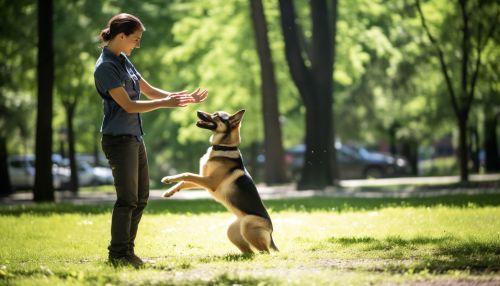Animal Training
Introduction
Animal training refers to the act of teaching, instructing, and conditioning animals to exhibit certain behaviors or perform specific tasks. The process involves the use of various techniques, including positive reinforcement, negative reinforcement, classical conditioning, and operant conditioning. Animal training is a broad field that encompasses a variety of disciplines, from domestic pet training to the training of service animals, working animals, and animals used in entertainment.


History of Animal Training
The history of animal training dates back to prehistoric times, when early humans first began to domesticate animals. The earliest evidence of animal training can be traced back to the domestication of wolves into dogs, which is believed to have occurred around 15,000 years ago. Over time, humans have trained a wide variety of animals for different purposes, including hunting, transportation, agriculture, entertainment, and companionship.
Techniques in Animal Training
Animal training techniques vary widely depending on the species of animal, the desired behavior, and the purpose of the training. However, most animal training techniques are based on the principles of learning theory, which includes classical conditioning and operant conditioning.
Classical Conditioning
Classical conditioning, also known as Pavlovian conditioning, is a learning process in which an animal learns to associate a neutral stimulus with a significant stimulus. This technique was first described by Russian physiologist Ivan Pavlov, who conducted experiments with dogs and discovered that they could be conditioned to salivate at the sound of a bell if it was consistently paired with the presentation of food.
Operant Conditioning
Operant conditioning, on the other hand, is a learning process in which an animal's behavior is shaped by its consequences. This technique was developed by American psychologist B.F. Skinner, who used a device known as a Skinner box to study the behavior of rats and pigeons. Operant conditioning involves the use of reinforcements (positive or negative) and punishments to encourage or discourage certain behaviors.
Types of Animal Training
There are various types of animal training, each with its own specific goals and techniques. These include pet training, service animal training, working animal training, and animal training for entertainment.
Pet Training
Pet training involves teaching domestic pets, such as dogs and cats, to behave in ways that are acceptable to their human owners. This can include basic obedience training, such as teaching a dog to sit, stay, or come on command, as well as more complex training, such as teaching a dog to perform tricks or compete in dog sports.
Service Animal Training
Service animal training involves training animals to assist individuals with disabilities. The most common types of service animals are guide dogs for the blind, hearing dogs for the deaf, and service dogs for individuals with physical disabilities. These animals are trained to perform specific tasks that their human handlers cannot do themselves.
Working Animal Training
Working animal training involves training animals to perform tasks related to work or labor. This can include training horses for riding or pulling carts, training dogs for herding livestock, or training birds of prey for falconry.
Animal Training for Entertainment
Animal training for entertainment involves training animals to perform in shows, circuses, films, and television. This can include training dolphins to perform tricks in a marine park, training elephants to perform in a circus, or training dogs to act in a film or television show.
Ethical Considerations in Animal Training
There are many ethical considerations in animal training, particularly in relation to the use of punishment and the welfare of the animal. Many animal trainers advocate for the use of positive reinforcement techniques, which reward the animal for performing the desired behavior, rather than punishment techniques, which can cause fear and stress. Additionally, there are concerns about the welfare of animals used in entertainment, particularly in circuses and marine parks, where animals are often kept in conditions that do not meet their physical and psychological needs.
